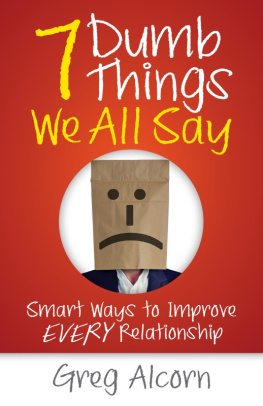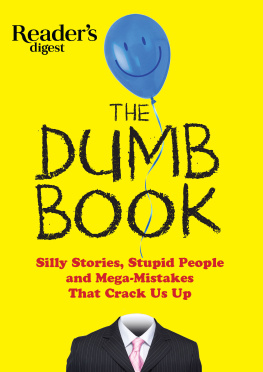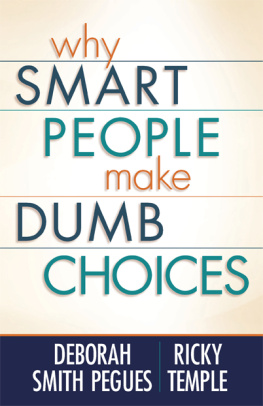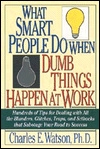Copyright 2019 by Greg Alcorn
All rights reserved.
Printed in the United States of America.
No part of this publication may be reproduced or distributed in any form or by any means without the prior permission of the publisher. Requests for permission should be directed to , or mailed to Permissions, Indie Books International, 2424 Vista Way, Suite 316, Oceanside, CA 92054.
Neither the publisher nor the author is engaged in rendering legal, tax or other professional services through this book. The information is for business education purposes only. If expert assistance is required, the services of appropriate professionals should be sought. The publisher and the author shall have neither liability nor responsibility to any person or entity with respect to any loss or damage caused directly or indirectly by the information in this publication.
ISBN-10: 1-947480-32-4
ISBN-13: 978-1-947480-32-2
eISBN: 978-1-9474804-3-8
Library of Congress Control Number: 2018962277
Designed by Joni McPherson, mcphersongraphics.com
INDIE BOOKS INTERNATIONAL, LLC
2424 VISTA WAY, SUITE 316
OCEANSIDE, CA 92054
www.indiebooksintl.com
This is not a page-turner, a book so exciting you cant put it down until you read it all. This is a book meant to be savored. Jump in anywhere. Come back to it and read a favorite section again. Keep it on your bookshelf and read it again and again. We all say dumb things (if you dont believe me, just ask my wife, Missie). The trick is not to say them repeatedly.
Greg Alcorn, Salisbury, North Carolina
September 2018
Dale Carnegie never ran a call center.
The world owes a debt to Carnegie, author of the classic book, How to Win Friends and Influence People.
When it comes to influence, I have picked up a thing or two in the last three decades. I have run customer service call centers for thirty years and I have listened in on twenty-one million calls. In that time, I have made and I have heard countless conversation blunders. Thats right: the dumb things we all say.
The advice in this book is based on our proprietary research into what works and what does not work in conversations. Countless customer satisfaction surveys have given us the data to know how to win through better conversations in the twenty-first century.
Winning through better conversations was a theme of How to Win Friends and Influence People, a self-help book published in 1936. Over thirty million copies have been sold worldwide, making it one of the best-selling books of all time.
Carnegies book contains colorful anecdotes, insightful wisdom, instruction in handling people, winning friends, bringing people around to your way of thinking, being a great leader, and successfully navigating home life. Carnegies writing combines age-old truisms with the then-emerging field of psychology to present a handbook in human relations which was interesting and accessible.
The book that you are holding is applied psychology updated for our age. This is a subject I have studied to improve the quality of conversations which our customer advocates have with callers. My view is applied psychology is not manipulation; it is simply polite and respectful communication.
In other words, not saying dumb things when we communicate.
Sadly, communication skills are not taught in our schools as they should be. (If you ask me, the greatest time to teach communications skills would be the eighth grade, just before those awkward high school years. Trust me, I know the importance of learning the hard skills in schools, like reading, writing, and arithmetic. But those high school years and beyond would be a lot less awkward if teenagers had in their tool chests a few more communications soft skills.)
Once upon a time, soft skills mattered. Really mattered. Soft skills include the ability to have a great conversation. Having a conversation is like a friendly tennis match of serve and volley; of speaking and listening.
In my view, quality conversations today are rare. Sometimes these conversations are only used as a last resort when text sarcasm is missed, the wrong person was copied on an email, or a wrong attachment was attached. During those difficult times, a person needs all the conversation skills they can muster.
But what about avoiding difficult times? The purpose of this book is to provide soft skill conversation suggestions for those occasions when a powerful voice is needed and a laser-focused ear is wanted. I hope to open eyes to the joy and satisfaction of great dialogue and make it less rare.
No one expects anybody to read this book and become a conversation master. But if people read and seek to apply these communications skills, then they can expect to improve their proficiency.
Commands and Suggestions
In one memorable broadcast, Garrison Keillor, the former host of NPRs Prairie Home Companion, was comparing Episcopalians to other denominations. He said, Theyre so liberal they have six commandments and four suggestions.
In my world of running call centers, its mostly rules and commands. Fewer suggestions.
Yet, customer experience has some openings for suggestions. At our call centers, we combine the necessary disclosures and disclaimers with friendly, bonding, supportive words to provide the facts while promoting a good feeling. Many of our coaching fundamentals focus on voice inflection and the use of stimulating words and phrases. We often replace the simplest of responses with those that perk up the customer and make their day. Our associates have the freedom to suggest pleasantries.
For example, when a customer asks us, How are you? we might replace fine, good, or well with terrific, fantastic, or excellent. Dont you like talking to people who feel fantastic? We strive to combine compliance with friendly service, and the results have been amazing.
Most of our work has an audio component to it, so we spend most of our education time on presentation skills and the rest of the time on compliance. Its a great combination of rules and suggestions.
Everyone can benefit from feedback on pace. People used to say I talked too fast, a rare accusation for a Southerner like myself. When I listened to recordings, I realized I was, in fact, too rapid in my speech. Now Im more conscious of my speech pace today, and I hope my slowing down helps listeners feel more comfortable when Im speaking. Still, every time I listen to my recorded voice, I always say: Do I sound like that?















